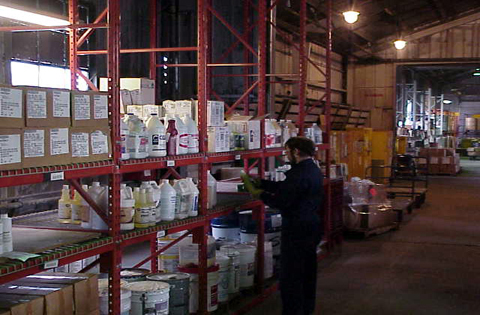
Inventory happens to be the asset for every firm as they have the primary goods which need to be sold for earning the revenue. Inventory control and management are considered to be a crucial component to ensure the success of your business.
Hence, it is essential to evaluate them regularly to make sure that you are on the right track. With these components, you can find out whether the stock is working correctly for you or not, if you run out of the best-selling products more frequently, if you are losing more money on the extra stock, to name a few.
Here is a list of few of the inventory control techniques which play an integral role in enhancing the bottom line of your business:
ABC analysis of the inventory
The ABC analysis of inventory is considered to be a technique to sort the list into three categories, based on how well, such products are selling, and how much they are going to cost you for holding. The three types include A, B, and C items.
A-items are regarded as the best selling products which do not take all the space in the warehouse. B items, on the other hand, refer to those products which are sold regularly. However, it takes more money to sell these products, in comparison to the N-items. The remaining part of the inventory is known to make a bulk of the inventory costs. However, they provide the least profit for the business.
With the ABC analysis of the inventory, it is possible to keep the capital costs significantly low as you can make a list of the items that should be reordered more frequently and those specific products which should not be stocked often.
Hence, you should ensure to opt for a high quality of JD Edwards Cloud to get real-time product information about the supply, demand, and available quantities of different items in your inventory.
LIFO and FIFO technique
FIFO or First In First Out is recognized to be the best option to control the inventory. As the name suggests, the product which arrives first in the stock is sold first, once the order for them comes. It is because all the old items are sold at first.
Hence, you do not need to lose your night’s sleep while worrying about gathering the obsolete stock. This technique is considered to be an ideal choice for those vendors who are known to deal with any sort of perishable items like natural products, medicines that come with expiry dates, to name a few.
LIFO or Last In First Out is considered to be advantageous for those vendors who make use of the latest inventory costs at first, which enhances the bottom line of the business. In this process, the vendors are known to dispose of those items, which come at last in the inventory. It is an excellent choice for controlling the list of non-perishable items like smartphones, toys, bikes, etc.
Bulk shipment
This process is based on the notion that shipping and buying goods in bulk involve a reduced cut off from the pocket. It is considered to be one of the well-renowned inventory control techniques of the industry, which can improve the bottom line of your business.
You can order the bulk shipment of those items that have a higher customer demand. The profits of your business will increase manifolds with the use of inventory management techniques. As you do not need to order frequently, it includes reduced shipping costs. It works perfectly for those staple items which have a longer shelf life and higher demand.
JIT
JIT or Just In Time Inventory management plays an integral role in reducing the inventory volume, which the business owner keeps in stock generally. It is regarded as a risky process as you buy inventories just a few days before the distribution.
This technique is useful in saving on the inventory holding costs by reducing the stock level and getting away from such situations when the products have to sit on the stock for several months. However, the business should be highly agile and capable of handling the shorter production cycle.
EOQ
EOQ or Economic Order Quantity refers to the efficient process to control the inventory, primarily when you are using the perpetual inventory management system. In this process, the stock replenishes the catalog with a certain count of units that have been dispatched already.
It helps in reducing the total costs of the inventory, which include the ordering costs, holding costs, and the shortage costs. It is beneficial for enhancing the revenue of startups and small businesses.
Inventory control and management are considered to be an ideal choice for maintaining a better and healthy relationship with the vendors and customers. It also helps in boosting the bottom line of the business significantly.